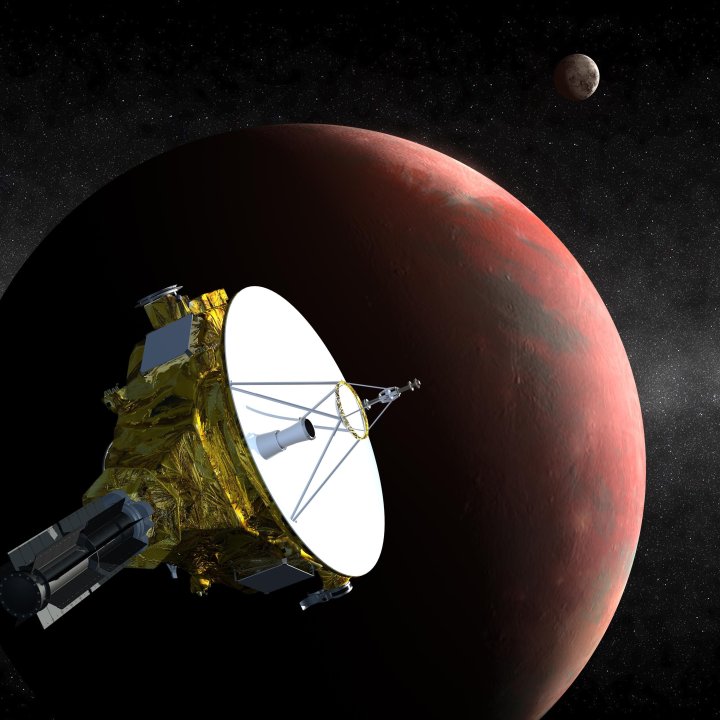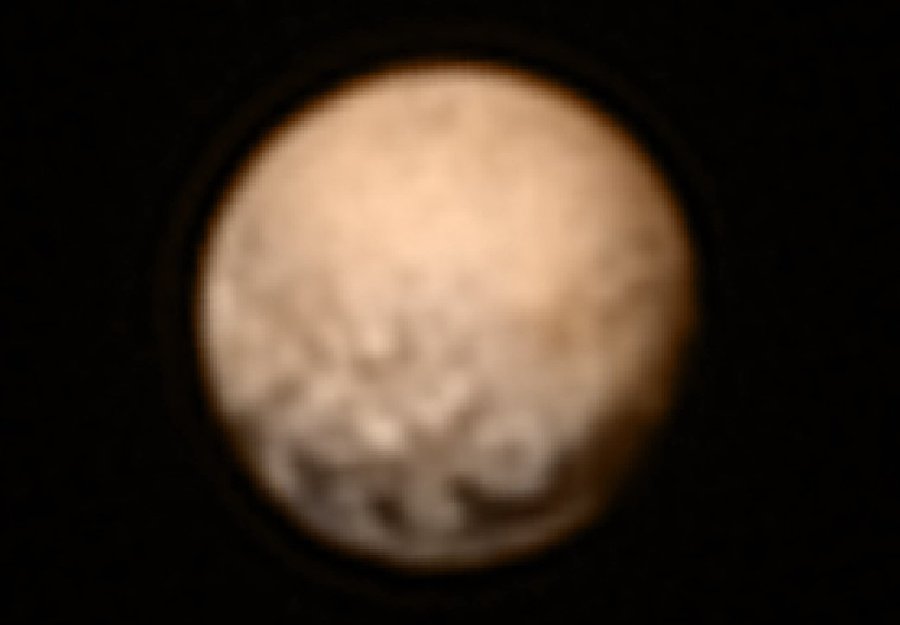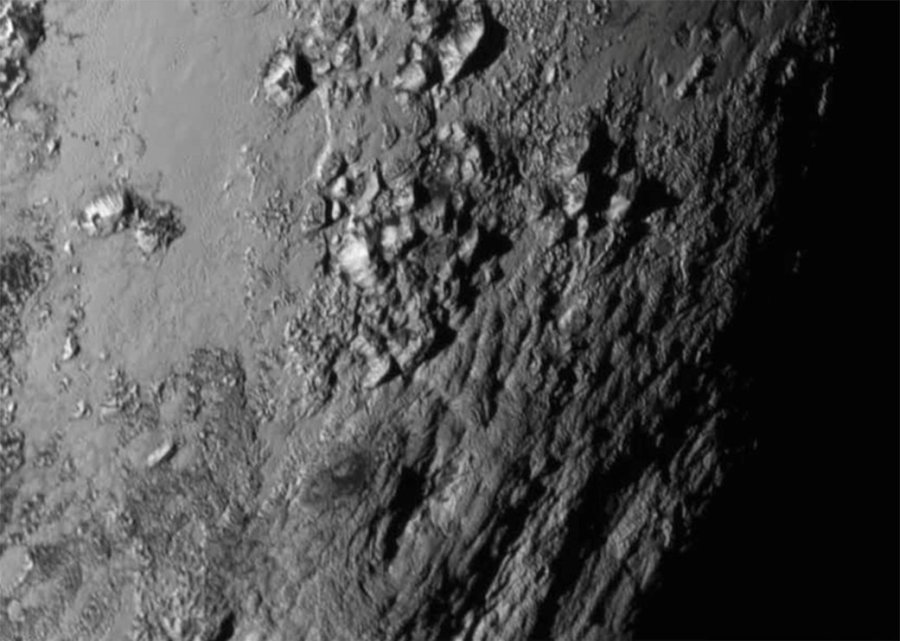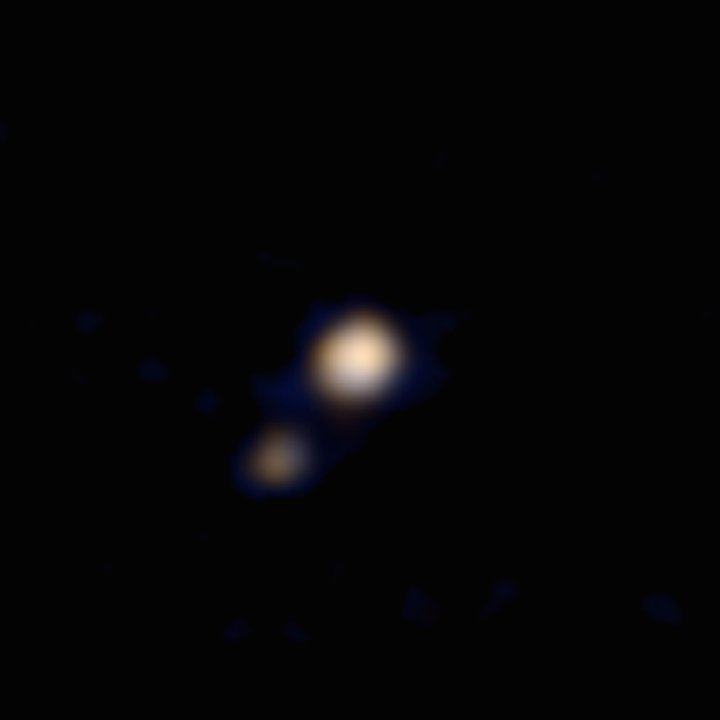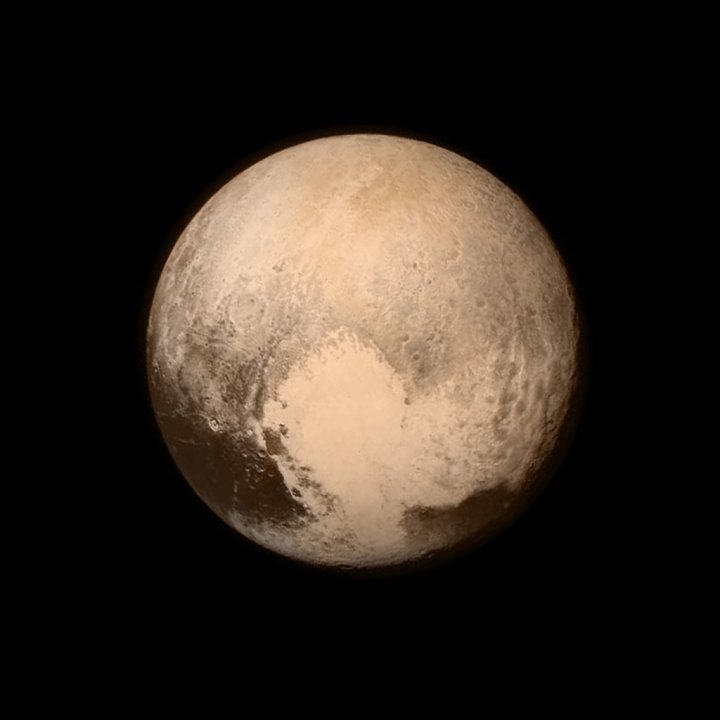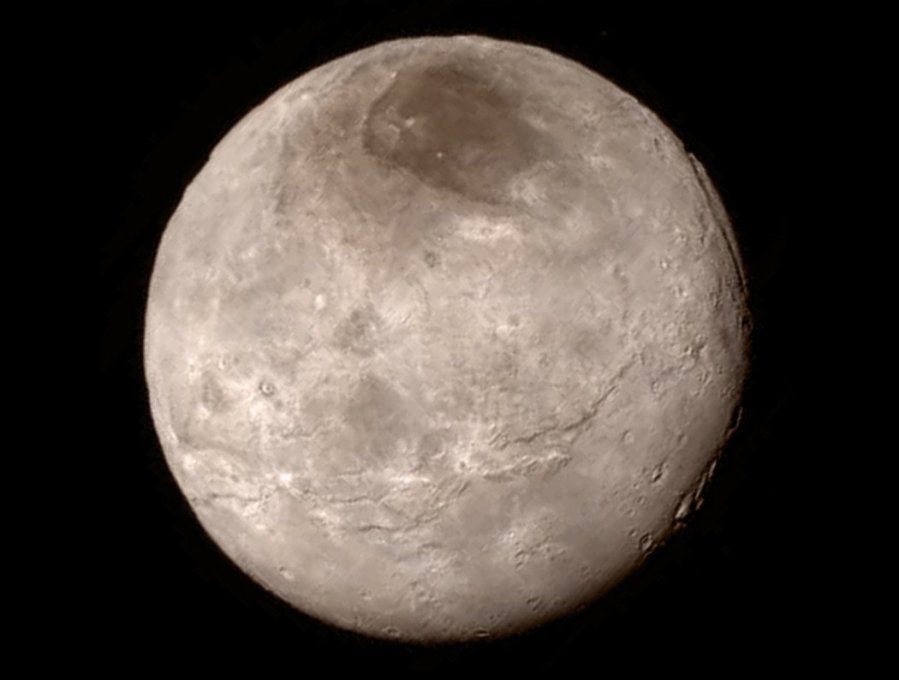This is an archived article and the information in the article may be outdated. Please look at the time stamp on the story to see when it was last updated.
LAUREL, Md. — NASA on Wednesday revealed new images from the New Horizons spacecraft that flew by Pluto one day earlier.
“Yesterday, America’s space program took another historic leap for humankind. Today, the New Horizons team is bringing what was previously a blurred point of light into focus,” spokesman Dwayne Brown said.
The images the craft took and transmitted back to Earth are from the closest point the probe came to the dwarf planet as it made its milestone in space exploration history. With Wednesday’s photos, New Horizons is also sending a banquet of knowledge to scientists.
Among the discoveries are icy mountains, rising as high as 11,000 feet, which likely formed no more than 100 million years ago. That sounds like a long time, but not so long compared with the 4.56-billion-year age of the solar system. The area may still be geologically active.
The Pluto mission completes the reconnaissance of the classical solar system, and it makes the United States the first nation to send a space probe to every planet from Mercury to Pluto.
The flyby came 50 years after the Mariner 4 probe accomplished the first flyby of Mars, which sent back the first photos of another planet taken close up from space.
In the weeks that New Horizons was homing in on Pluto, NASA and its partner, the Johns Hopkins University Applied Physics Laboratory, published a barrage of images. First, they showed blurry spots that grew larger.
By Tuesday, clear photos revealed the contours of the planet’s surface and of its largest moon, Charon. Wednesday images and information are just the beginning of 16 months’ worth of data the probe will send back to Earth.
“Pluto New Horizons is a true mission of exploration showing us why basic scientific research is so important,” said John Grunsfeld, a NASA associate administrator.
“The mission has had nine years to build expectations about what we would see during closest approach to Pluto and Charon. Today, we get the first sampling of the scientific treasure collected during those critical moments, and I can tell you it dramatically surpasses those high expectations.”

Close
Thanks for signing up!
Watch for us in your inbox.
Subscribe Now
